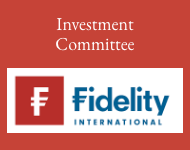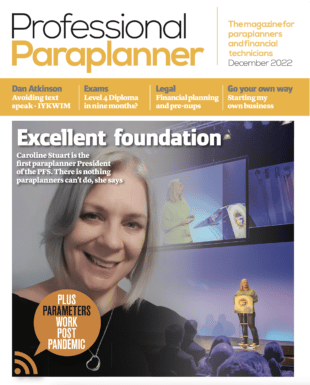The paraplanning world is changing and we need to get onboard with change if we want to have a long term career as a paraplanner, says PFS Paraplanner Zara Okoro.
In the rapidly evolving world of financial planning, the paraplanner’s role is at a crossroads. You can stay in your lane, diligently completing cases according to existing processes, and even dip into project work now and then. But make no mistake—if you don’t understand the bigger picture, the overall strategy for improving your paraplanning function, you’ll eventually be forced to adapt, and not on your own terms.
Paraplanning is evolving. Firms are no longer satisfied with simply churning out technically accurate cases. The focus now is on efficiency, reducing errors, and improving client outcomes. These aren’t just buzzwords; they’re the core objectives of almost every paraplanning strategy currently in play. If you’re unaware of what that strategy looks like in your firm – or worse, if you don’t care – you risk stagnation. Those who see and understand the strategy will thrive. Those who don’t will always be playing catch-up.
The good news? Finding your firm’s paraplanning strategy isn’t some secret society initiation ritual. It comes down to two things: reading between the lines and asking the right questions.
How to read between the lines
Strategies aren’t always explicitly communicated, but they’re visible if you know where to look. Watch what’s being actioned around you:
• Is automation being rolled out?
• Are templates being updated?
• Is case turnover suddenly under tighter scrutiny?
These are clues. If the focus is on automation, the strategy might be about increasing efficiency. If templates are being fine-tuned, it could be about improving consistency and reducing errors. Pay attention to what’s happening, and patterns will start to emerge.
Ask better questions
If you think you can walk up to your manager and ask, “What’s the paraplanning strategy here?” and get a clear, comprehensive answer – you’re dreaming. Strategies are rarely laid out in black and white, but you can still uncover them with the right approach.
Instead, ask questions like:
• “What’s the next big initiative to improve paraplanning?”
• “How can I help support these improvements?”
• “What’s being prioritised for the team this year?”
People love to talk about what’s next – give them the opening, and you’ll often get more insight than you expected.
Align with the strategy—or create your own
Once you’ve pieced together the strategy, it’s time to reflect: Do I believe in this direction? Does the firm’s outlook on paraplanning align with your vision for your career? If the answer is yes, then you have a powerful opportunity to grow.
Understanding the strategy also makes it easier to identify the skills you’ll need to develop. For example:
• If automation is central to the strategy, learn prompt engineering or automation workflows.
• If consumer understanding is a focus, explore creating digital visuals and developing your skills in simplifying complex concepts.
• If process improvements are tied to regulatory updates, familiarise yourself with the relevant COBS sections to strengthen your technical foundation and contribute effectively to template reviews and updates.
Armed with these skills, you’re no longer just following orders—you’re contributing meaningfully to the strategy’s success.
From strategy to tactics: Becoming indispensable
Once you’ve connected the dots and started developing relevant skills, you can shift your focus to suggesting tactics that align with the strategy. Whether it’s streamlining a process, improving a template, or offering insights from your project work, every action you take will be deliberate and impactful.
You’ll no longer be the paraplanner who just “helps out” with project work – you’ll be the one steering it. You’ll be seen as someone who understands the bigger picture, who’s strategic, adaptable, and essential to the team’s success.
Because in the end, the future belongs to those who adapt with intention. The choice is yours: Adapt, innovate – or get left behind.
Main image: oc-gonzalez-xg8z_KhSorQ-unsplash































